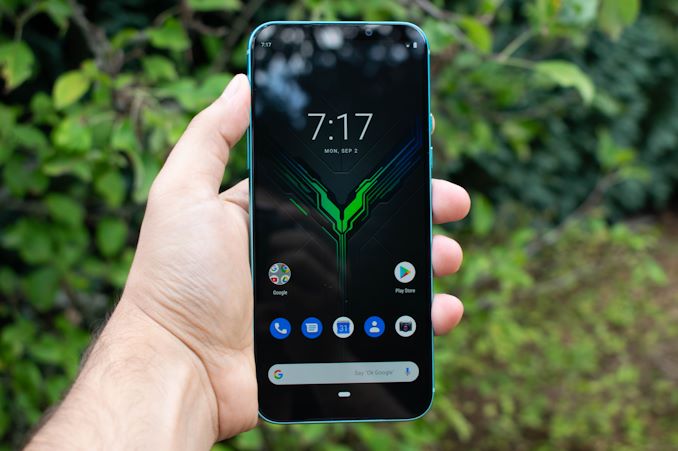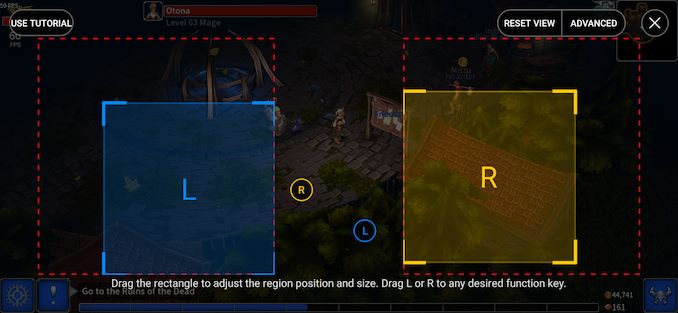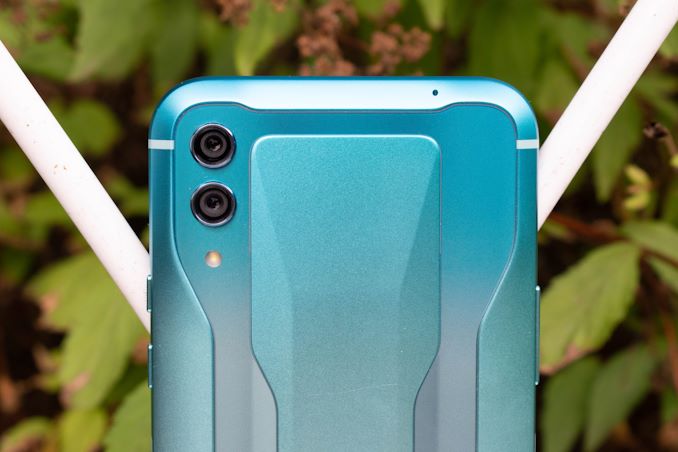The Black Shark 2 Review: A Gaming Phone's Existential Crisis
by Andrei Frumusanu on September 25, 2019 8:00 AM EST- Posted in
- Mobile
- Smartphones
- Xiaomi
- Snapdragon 855
- Black Shark 2
Conclusion & End Remarks
The Black Shark 2 is actually the first “gaming” phone that I’ve gotten to dedicate a review to. Going into the review I had a few preconceptions of what this means and what the basic checkmarks of what a gaming phone should be and what it should deliver.
First of all, in terms of design, the Black Shark 2 does put a checkmark on its “gaming aesthetics”, and the accentuated modern design elements of the phone very much remind one of the typical gaming products that consumers are accustomed.
The build quality of the phone is excellent and feels very solid; it’s also of a reasonable size and weight – keeping the size in check with delivering a gaming phone experience in a 75mm wide form-factor.
The Black Shark 2’s 6.39” AMOLED screen is quite adequate and should satisfy most users, albeit it doesn’t showcase any particular strengths and its colour calibration also seems to have larger weaknesses.
The best thing about the display is actually the touch input controller that operates at a higher-than-usual 240Hz, something that’s particularly noticeable in the scrolling latency of content and surely would also help in the touch input latency of games.
On the software side, I wasn’t too convinced of the value of the Shark gaming suite. In essence, it’s just a glorified launcher UI with a lot of gimmicks. The one real benefit I found to be actual a practical feature is the “MasterTouch” feature which allows you to map two pressure sensitive areas on the screen to two new additional adjustable UI functions in a game, essentially enabling you to turn in-game analog sticks to also serve as click-buttons, much like on a real controller joystick.
The cameras on the Black Shark 2 just aren’t very good. I had expected the phone to at least match the very good daylight processing of the Xiaomi Mi9, but alas that’s not the case, and the BS2 just doesn’t offer the same more consistent and superior camera calibration and post processing. It has worse exposure, colour balance, and details, especially on the zoom module that showcases a detrimental contrast and sharpening filter.
In low-light, the phone is actually even worse than the Mi9 due to the fact that it lacks the dedicated night mode. It’s in essence the worst camera I’ve tested in recent years.
A Gaming Phone's Existential Crisis
I mentioned I had preconceptions of what a gaming phone should be able to deliver, and the one aspect that I would value above all others in such a product, is the gaming performance that it's able to deliver.
On the CPU side of things, the BS2 fares quite OK and is about average to a little below average compared to other Snapdragon 855 devices. The benefit of this more conservative tuning is the fact that it does quite well in terms of battery life, and its 4000mAh battery does showcase itself as an advantage compared to other devices.
In terms of gaming/GPU performance, the Black Shark 2 is simply an utter disaster and an embarrassment of a device. The matter of fact here is that the phone ended up with the single worst sustained performance of any Snapdragon 855 phone in the market. The phone’s thermal throttling is very aggressive, and though it’s able to maintain very reasonable skin temperatures, it comes at a great cost of performance.
The problem here is that Xiaomi continues to try to mislead its customers as to the real performance of the phone – the firmware detects benchmarks and disables thermal throttling in order to get better scores. In this scenario of course it showcases excellent performance, but I stopped the phone in its tracks after it had reached an excess of 57°C, at which point it was uncomfortably hot to hold. The issue isn’t new to the Black Shark 2 as last year’s Black Shark behaved the same – showcasing great cheating behaviour while its real performance was just lacklustre.
Here’s the thing, the Black Shark 2 isn’t all that cheap, coming at a minimum of 549€ for the base storage model. For a phone which completely fails at the very thing it’s designed for, I can’t see how one would able to justify its purchase. The cameras are massively underwhelming, and the display is also lacklustre compared to other phones. The only redeeming features of the Black Shark 2 remains its 240Hz touchscreen, the MasterTouch feature, and above-average battery life.
Currently I just don’t see how the BS2 can justify its existence over any other regular non-gaming phone, the compromises and disadvantages vastly outweigh the one or two features which actually do benefit the phone.













63 Comments
View All Comments
Jon Tseng - Wednesday, September 25, 2019 - link
Thanks interesting. I guess that definitely answers the question as to whether the paid Qualcomm partnership had any impact on your ratings (not that it would, knowing AT, I know!).PaulHoule - Wednesday, September 25, 2019 - link
What I found strange about the article is that, unlike most reviews of gaming hardware, there were not any benchmarks for games.Maybe that's because nobody cares how many frames per second you can render Candy Crush which is why they pack it in with Windows so Intel can claim there is a "game" you can play with the integrated graphics.
If there aren't any games that need a gaming phone, why does a gaming phone have to exist? It's like the sound of one hand clapping. isn't it?
Death666Angel - Wednesday, September 25, 2019 - link
I mean, there area pretty intensive games for smartphones out there, think PUBG, Fortnite, racing games. I don't really know if they provide accurate/useful ingame benchmarks and I don't know if there are any FRAPS / FCAT like apps for Android. I don't think we get anything better than 3DMark and GFXBench right now. :) Everything else is non repeatable and therefore of little use.PeachNCream - Wednesday, September 25, 2019 - link
Pretty sure the decision to include Candy Crush is between Microsoft and King. It isn't a decision related to Intel. After all AMD based Windows systems ship with it preloaded as well.crimson117 - Wednesday, September 25, 2019 - link
I think benchmarks were omitted because "the firmware detects benchmarks and disables thermal throttling in order to get better scores." So benchmarks would be meaningless and misleading.s.yu - Wednesday, September 25, 2019 - link
Generally Anandtech's benchmarks should be immune to detection, which is stated in the article.Andrei Frumusanu - Thursday, September 26, 2019 - link
Yes, we bypassed detection for the published scores.raghusa - Wednesday, September 25, 2019 - link
AT was always one of my go to place to get in-depth analysis and reviews. Now that AT is going with PAID partnership route, my view of AT analysis is definitely going to change, will likely look for other reputable sources ....Andrei Frumusanu - Thursday, September 26, 2019 - link
The review content is still fully independently written, and the editorial team including myself have no contact with the sponsor in this regard. In any case this series will come to a closure on Monday.Wardrive86 - Thursday, September 26, 2019 - link
I wish that it was not coming to an end! I very much enjoyed this series.